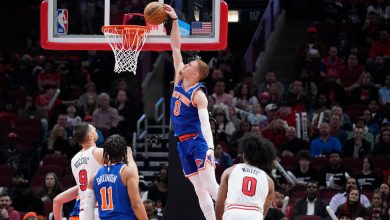M.L.B. Will Voluntarily Recognize Minor League Union

Major League Baseball will voluntarily recognize the M.L.B. Players Association as the formal union representative of minor league players, Commissioner Rob Manfred said on Friday. At a news conference regarding upcoming on-field rules changes in the major leagues, Manfred announced the notable development in the rapidly progressing unionization efforts by minor league players.
“We, I believe, notified the M.L.B.P.A. today that we are prepared to execute an agreement on voluntary recognition, and I believe they are working on the language as we speak,” Manfred said.
Among the details remaining to be ironed out are the size and scope of the bargaining unit. The union declined to comment through a spokesman.
Having played for more than 100 years without a formal union, the players of minor league baseball lack formal representation and thus cannot collectively bargain over wages or working conditions. In recent years, minor league players and advocacy groups have become more vocal about the players’ struggles and have gotten the attention of the U.S. Congress.
The executive board of the union, which has long declined to represent minor leaguers in part because the interests of the two groups can be at odds, voted two weeks ago to take this step. The union then sent out union authorization cards to over 5,000 domestic minor league players.
In just over a week, the union announced on Tuesday, “a significant majority” of minor league players had signed the cards authorizing the union to become their collective bargaining representative and, as result, it asked M.L.B. for formal recognition. (The minor league players would have a separate bargaining unit within the larger union.)
“Minor league players have made it unmistakably clear they want the M.L.B.P.A. to represent them and are ready to begin collective bargaining in order to positively affect the upcoming season,” Tony Clark, the head of the players’ union, said in a statement then.
With M.L.B. taking this route, minor league players avoided a longer unionization process.
A union can be formed in two ways. First, if at least 30 percent of workers sign a card or petition saying they want a union, the National Labor Relations Board will conduct an election. And if the majority of those who vote choose a union, the board will certify the union as the representative for collective bargaining. The second way — the one Manfred said M.L.B. was choosing — is when an employer voluntarily recognizes a union based on evidence that a majority of employees want it to represent them.
The M.L.B.P.A., which negotiated its first collective bargaining agreement in 1968, already represents players as they enter the professional ranks, such as players selected in the domestic amateur draft or international amateur free agents. But once they sign with an M.L.B. organization, the players are not represented by the union again until they are added to a team’s 40-man roster (1,200 total across all 30 M.L.B. teams).
While some players live off large signing bonuses negotiated in their first contracts, many have to work second jobs to make ends meet. According to Advocates for Minor Leaguers, a nonprofit founded two years ago that has spearheaded this fight and was recently folded into the union, the “vast majority” of minor league players “make less than $12,000 — below the federal poverty line.”
M.L.B., which took over and began reorganizing the minor leagues two years ago, has long argued that those players were similar to apprentices in fields such as art, music and theater who are working to break into a higher echelon of their trade in which they would be handsomely compensated. According to M.L.B., the average time spent in the minor leagues was roughly two and a half years. The minimum M.L.B. salary in 2022 is $700,000, while the average is $4 million.
In 2021, M.L.B. raised pay for minor league players, with Class A minimum salaries rising from $290 to $500 a week and Class AAA salaries increasing from $502 to $700. And this season, it enacted a housing policy under which all 30 M.L.B. teams were required to furnish housing to most players. (In the past, players often had to pay for their own housing, which resulted in instances in which several would jam into a single room of an apartment.)
Scott Miller contributed reporting.




